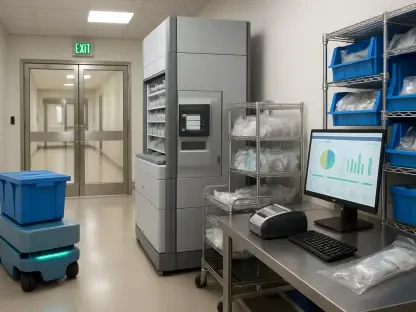The AI medical scribe market has become increasingly competitive, driven by the pressing need to find solutions to clinician burnout and administrative overload. Doximity’s recent entry into this space, with its free scribe tool, aims to disrupt traditional models by offering a cost-effective and technologically advanced alternative. Such tools promise not only to alleviate financial burdens for healthcare providers but also to streamline complex documentation processes, making it a potential game-changer in healthcare technology.
Shifting Paradigms in Medical Documentation
Over the years, AI scribes have evolved significantly, moving from basic transcription aids to comprehensive systems integrated within clinical workflows. Initially, skepticism surrounding the high costs and challenging integration of these technologies was prevalent. However, the advancements in AI, particularly from companies like Doximity, have catalyzed a transformation in perceptions, providing tools that assist in reducing the administrative tasks of clinicians. This evolution marks a significant milestone in addressing the issue of clinician burnout, signaling the beginning of a transformative era in medical documentation.
Doximity’s Network Advantage
One of Doximity’s key strategic advantages in this burgeoning market is its extensive network encompassing over 80% of U.S. physicians. This robust network offers Doximity a significant edge over competitors like Microsoft’s DAX and others, enabling quick adoption and integration of its scribe tool. By leveraging these connections, Doximity can effectively introduce its innovative solutions to healthcare providers who seek reliable, accessible, and efficient documentation tools. This underscores Doximity’s potential impact in reshaping clinician workflows on a large scale.
Integration with Telemedicine and Beyond
Doximity’s integration strategy involves harmonizing its scribe tool with its existing telemedicine services, creating a seamless user experience for both in-person and virtual consultations. This integration removes the hassle of additional software installations and is adaptable to various clinical settings, saving time and reducing barriers to entry. The mobile-friendly design of Doximity’s platform further enhances its utility in modern healthcare environments, ensuring that clinicians can efficiently document and share information across diverse platforms without interruption.
Regulatory and Market Impact
The regional differences in technology adoption and regulatory standards present unique challenges and opportunities. Doximity’s commitment to HIPAA compliance addresses critical concerns regarding data security, fostering trust among users. By prioritizing underserved clinics, Doximity also emphasizes the democratization of advanced technologies, showcasing its role in expanding access across different healthcare markets. As regulatory landscapes evolve, Doximity’s proactive stance positions it favorably to navigate future changes while maintaining high standards.
Long-Term Implications and Strategic Insights
The evolution of AI medical scribes reflects broader trends in healthcare technology, highlighting a shift toward comprehensive solutions that alleviate clinician burdens. Doximity’s entry into this arena signifies a critical juncture where healthcare providers can leverage these technologies to enhance efficiency and improve patient outcomes. Adopting these tools requires healthcare providers to focus on aligning technological capabilities with clinical needs, ensuring compliance, and embracing ongoing improvements.
The findings highlight Doximity’s potential to substantially alter the landscape of medical documentation. The company’s focus on accessibility and seamless integration underscores the long-lasting importance of AI in reducing clinician workload. Future steps for healthcare systems would involve exploring these innovations as integral to clinical strategies, recognizing that continuous adaptation and strategic partnerships could redefine efficiency in clinical practice.









